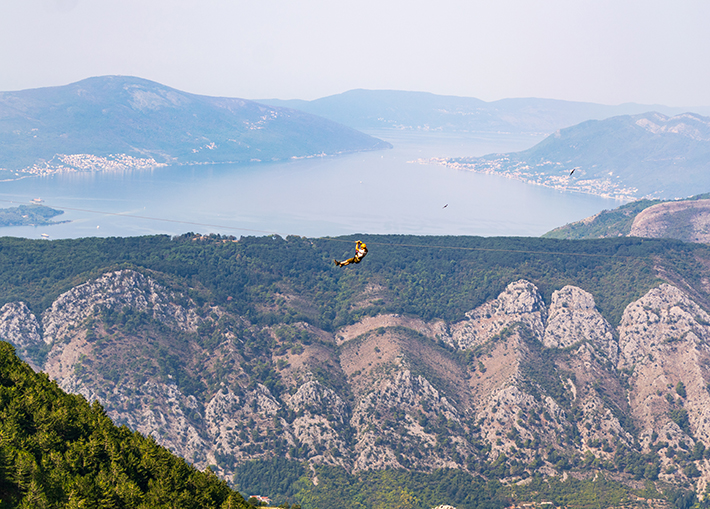
Keeping Adventure Seekers Safe
Amusement rides have evolved over time, from roller coasters, to waterslides, to bungee jumps, and more. But the reality of what’s fun has never really wavered: thrills, chills, and drops are fun for the whole family – it’s the medium that changes. That’s why the committee on amusement rides and devices (F24) was formed in 1978 to write, manage, and oversee standards related to all aspects of amusement rides and attractions.
The committee works on core standards that generally apply to all amusement rides, addressing things like design, quality, manufacture, operations, maintenance, and inspection. From there, it’s all about extrapolating out and applying those same concepts to the growing variety of different rides and attractions.
“This is an industry that loves to innovate,” says committee chair Franceen Gonzales, chief experience officer with WhiteWater West Industries, one of the largest manufacturers of water park attractions in the world. “Anytime someone invents something new, people want to put it into an amusement park. That’s why every standard we write, we do it in such a way that people can continue to innovate while also being safe and adhering to those same tenets of quality.”
READ MORE: The 3 Most Important Standards for Amusement Rides and Devices
For example, in the last 10 years, a wide range of new attractions has hit the scene that have redefined what an amusement ride could be. The popularity of ziplines, trampoline parks, and other new options exploded in recent years, spurring the subcommittee on adventure attractions (F24.61) to publish the standard practice for aerial adventure courses (F2959) in 2012. Like the committee’s other standards, F2959 establishes criteria for the design, manufacture, and installation of aerial adventure courses as well as their safe operation and maintenance needs.
And that boils down to anything that puts the user above the ground and in a harness to protect them from a fall, explains subcommittee chair Jared Krupa, a principal with K2 Engineering and Structural Design.
“The standard covers everything from ziplines to challenge courses to via ferrata and even climbing walls,” he says. “It really fills a hole in the industry for any application where you have cables up in the air that are supported by trees or other anchors.”
That’s because a zipline is very different from a roller coaster. At a traditional amusement park, guests typically experience rides that travel on a fixed path while being safely restrained within a ride vehicle. On these types of rides, the necessary safety measures and controls are meticulously designed into the ride. As long as the ride itself is designed, built, operated, and maintained to existing standards, and the participant follows all posted signage, the result will be a safe, fun experience.
However, as the industry has grown to include attractions where participants have some control over their bodies, and sometimes the operation of the ride vehicle, the safety factors have changed. There is now a need to ensure that the designed experience is not only safe, but that consideration has been given to the responsible actions of the participants and their correct performance of tasks as they enjoy the attraction. It’s a different type of risk profile, which calls for ongoing revisions and updates.
“The industry is growing fast, and everybody always wants the next latest and greatest thing,” says Krupa. “Maybe the old style of ziplines were slower and there is a new, more exciting type that has a different kind of breaking device because the speeds are higher. We're just trying to keep up with the next big thing in aerial adventure and make sure that the standard that was designed in 2012 is still applicable to all the new things that are coming out today and tomorrow.”
FOR YOU: Zip Line Safety
Right now, that means clarifying any issues or confusion that end-user stakeholders have raised, and deepening the term descriptions and other details of the core standard itself. At the moment, F24.61 is working on updates around wire rope safety, zipline breaking devices, vehicle doors, estop, and powered restraints, with more revisions expected in the months and years ahead.
As Gonzales explains it, the work never ends, and that’s exactly why the standard practice for aerial adventure courses is so valuable to the industry. As new attractions are introduced, it’s up to the committee on amusement rides and devices to proactively revise its standard in partnership with an ever-growing community of industry stakeholders.
“What is important is that there’s good collaboration,” she says. “We have stakeholders from different organizations and different parts of the industry that are all contributing to these efforts and we want all of those different perspectives. I'm looking forward to seeing good, constructive dialogue that moves the standard forward and makes it better for everyone. Because there's a lot at stake. You've got a lot of people who enjoy these attractions and we want to be able to have a standard ready for use as this segment of the industry continues to grow.”
Tim Sprinkle is a freelance writer based in Colorado Springs, Colorado. He has written for Yahoo, The Street, and other websites.
 SN Home
SN Home Archive
Archive Advertisers
Advertisers Masthead
Masthead RateCard
RateCard Subscribe
Subscribe Email Editor
Email Editor